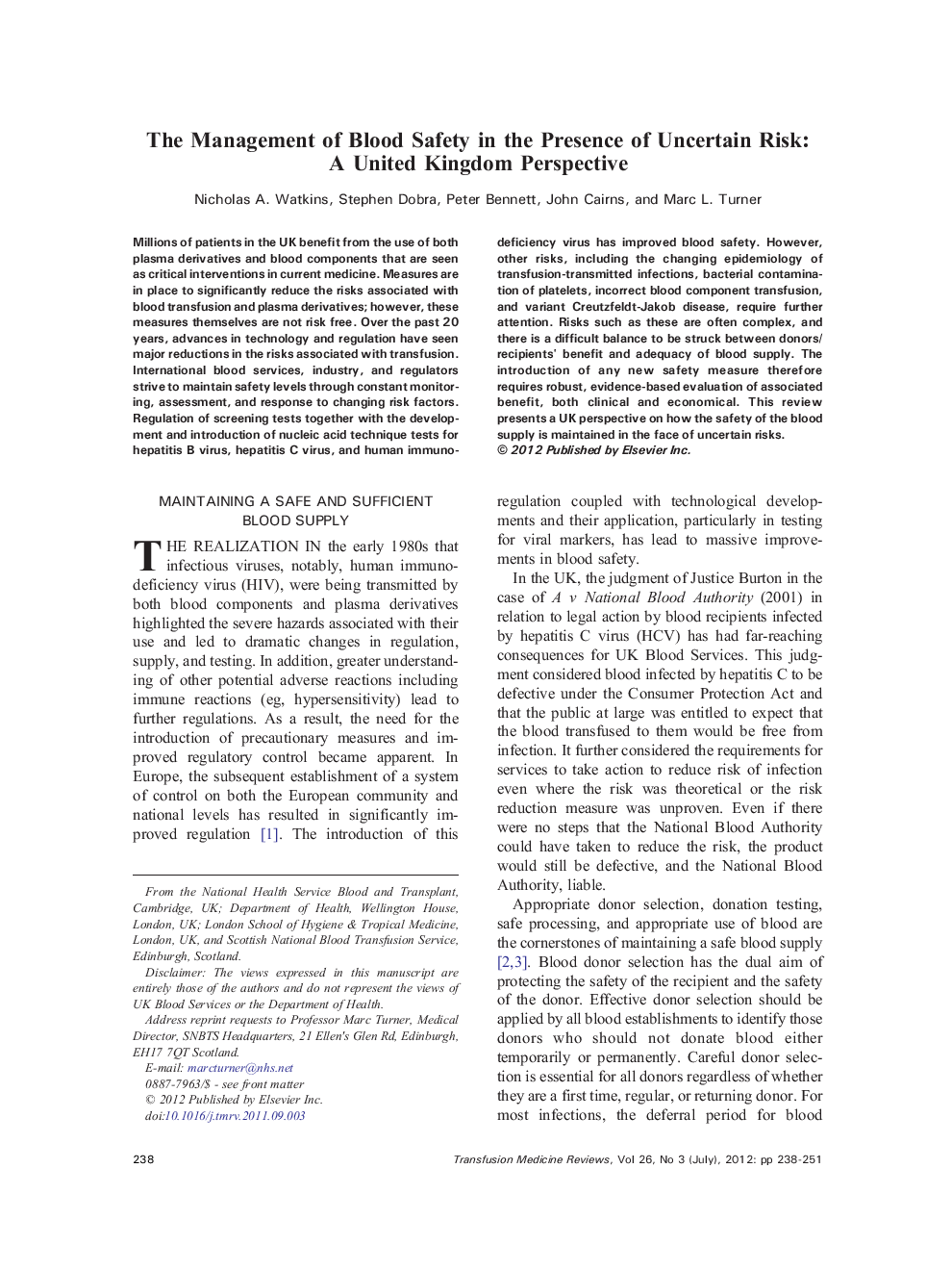| Article ID | Journal | Published Year | Pages | File Type |
|---|---|---|---|---|
| 3336777 | Transfusion Medicine Reviews | 2012 | 14 Pages |
Millions of patients in the UK benefit from the use of both plasma derivatives and blood components that are seen as critical interventions in current medicine. Measures are in place to significantly reduce the risks associated with blood transfusion and plasma derivatives; however, these measures themselves are not risk free. Over the past 20 years, advances in technology and regulation have seen major reductions in the risks associated with transfusion. International blood services, industry, and regulators strive to maintain safety levels through constant monitoring, assessment, and response to changing risk factors. Regulation of screening tests together with the development and introduction of nucleic acid technique tests for hepatitis B virus, hepatitis C virus, and human immunodeficiency virus has improved blood safety. However, other risks, including the changing epidemiology of transfusion-transmitted infections, bacterial contamination of platelets, incorrect blood component transfusion, and variant Creutzfeldt-Jakob disease, require further attention. Risks such as these are often complex, and there is a difficult balance to be struck between donors/recipients' benefit and adequacy of blood supply. The introduction of any new safety measure therefore requires robust, evidence-based evaluation of associated benefit, both clinical and economical. This review presents a UK perspective on how the safety of the blood supply is maintained in the face of uncertain risks.
